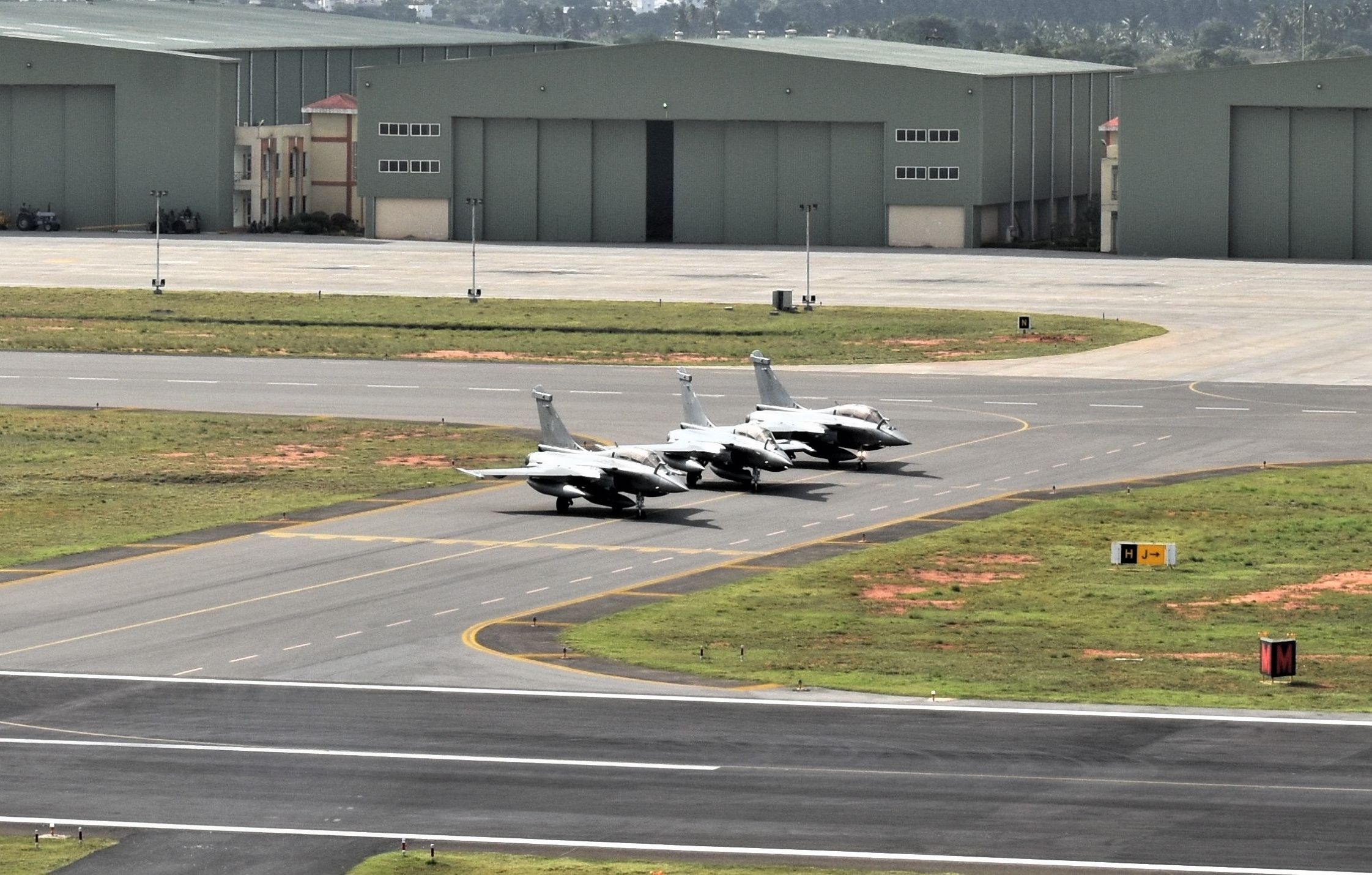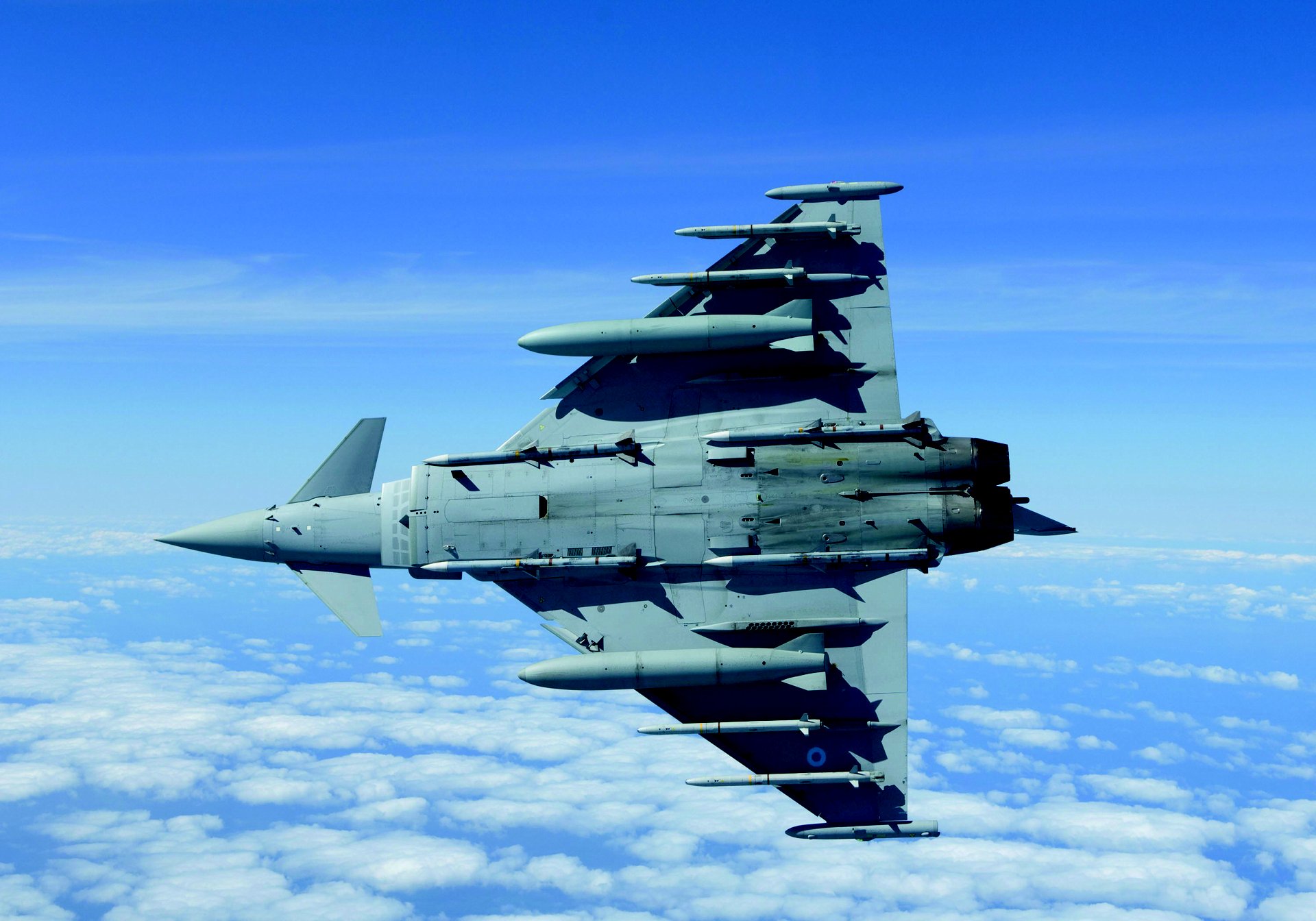In the past few weeks, the Indo-Pacific witnessed a colossal show of air power from two major European nations, Germany and France. They demonstrated their ability to conduct rapid long-range air deployments to the Indo-Pacific region ahead of Australia’s largest multinational Pitch Black Exercise.
Russia’s MiG-31 Fighter That Fired Hypersonic Missiles On Ukraine Conducted Drills In The Stratosphere
Russian Su-35 Fighter ‘Demolished’ Ukrainian Air Defense Radar By Firing Anti-Radiation Missile, Moscow Says
France’s air deployment, the ‘Pégase 2022,’ continues and will last until September 18. The deployment was planned as a continuum of exercises and stopovers in the Indo-Pacific, comprising three distinct phases.
The first phase involved a military exercise near New Caledonia, which envisioned a scenario of a fictitious island of “Badland” showing signs of invading its neighbor “Goodland,” and France, after sensing the risk to its territory, decided to dispatch its air assets to the region in 72 hours.
As part of this scenario, a French Air and Space Force contingent comprising three Dassault Rafale fighters, two Airbus A330 multi-role tanker transports (MRTTs), and two A400M Atlas transport aircraft arrived in the South Pacific on August 13 within the allotted time.
Most importantly, the French contingent on its way to the South Pacific made a technical stopover at the Indian Air Force’s Sulur base in Tamil Nadu on August 10-11, demonstrating the implementation of the reciprocal logistics support agreement inked between France and India in 2018.

The second phase of the Pégase 2022 involved the AAE contingent taking part in the Pitch Black 2022 organized by the Royal Australian Air Force (RAAF), which commenced on August 19 and lasted until September 8.
A French Air Force A330 Phénix, deployed for #PitchBlack2022 in Amberley ??, refuelled IAF Sukhoi SU-30s ahead of their touchdown in Darwin. This is the first time that ?? has refuelled ?? jets in flight during their projection. #Interoperability @IAF_MCC @Armee_de_lair pic.twitter.com/WRNuUNaLui
— Emmanuel Lenain ???? (@FranceinIndia) August 18, 2022
After that, the French contingent departed from Darwin, Australia, on September 11 and is currently undertaking the last phase of Pégase 2022, which involves two enhanced stages of air diplomacy and knowledge dissemination missions in Indonesia and Singapore, followed by a stopover in the UAE at Al Dhafra air base 104, before returning to France.
This will mark the longest air deployment carried out by France’s Air Force, some 18,000 kilometers from its national territory.
“The aim was to demonstrate that we’re able to project air power to protect either our territory or an ally’s territory,” Maj. Gen. Stephane Groen, chief of staff of the French Air and Space Force’s Air Operations Command and the commander of the drills, told Nikkei Asia.
The French air deployment overlapped with Germany’s Rapid Pacific 2022, in which Luftwaffe sent a contingent of six Eurofighter jets and seven support aircraft from Germany to Singapore in 24 hours.

On August 15, six Eurofighter Typhoon fighter jets departed from Germany, almost 30 minutes after four A400M transport aircraft and three A330 tankers set off from Cologne. In 24 hours following its departure, the Luftwaffe contingent arrived in Singapore from where it reached Darwin, Australia, to participate in Pitch Black 2022 exercise.
The most remarkable aspect of this air deployment was that the Luftwaffe contingent had to perform around 200 mid-air refueling maneuvers to make this lengthy flight possible.
“We want to demonstrate that we can be in Asia within a day,” the chief of the German Air Force, Lieutenant General Ingo Gerhartz, told Defense News about this deployment.
Europe’s Indo-Pacific Strategy
These long-range deployments to the Indo-Pacific from European nations reflect a growing focus within European capitals on the security challenges China poses to Europe’s interests in the region.
Last year, the European Union (EU) released its ‘Strategy for Cooperation in the Indo-Pacific,’ which stated that increasing tensions in regional hotspots such as the South and the East China Sea and the Taiwan Strait might have a direct impact on European security and prosperity.
The Indo-Pacific is the second largest destination of EU exports and is home to four of the EU’s ten biggest trading partners. It hosts major waterways of vital importance to EU trade, including the Malacca Straits, the South China Sea, and the Bab el-Mandeb Strait. The EU is interested in maintaining stability and freedom of navigation in this area.
Germany’s deployment is remarkable, as German military assets are not known to visit the Indo-Pacific region frequently. At the same time, France maintains a regular military presence in the region.
This is because, unlike Germany, France is a resident power in the Indo-Pacific, with several territories in the southern Indian and Pacific Oceans that house about 550,000 French citizens, meaning it has direct security interests in the region.
Michito Tsuruoka, an associate professor of international security and European politics at Japan’s Keio University, said France might deploy troops to the South Pacific as a precautionary measure in the event of an imminent conflict in the South China Sea.
Nevertheless, Germany has been gradually increasing its military presence in the region, albeit cautiously, not to provoke China, with whom it has strong trade relations.
Therefore, Lieutenant General Gerhartz told the media before its long-range air deployment that German warplanes would take civilian air traffic routes and not fly over the Taiwan Strait.
Also, last year, Germany sent a Brandenburg-class frigate, the Bayern, to the Indo-Pacific for a half-year-long mission marking the first German naval deployment to the region in over two decades. The German frigate avoided contentious maritime routes, according to experts.
- Contact the author at tanmaykadam700@gmail.com
- Follow EurAsian Times on Google News




